What are curb roses and what are the most popular varieties?
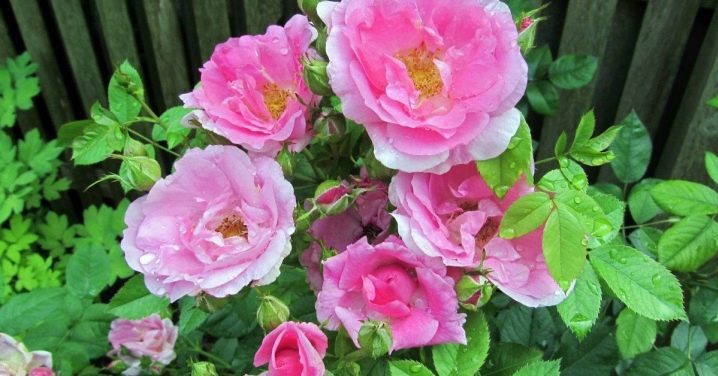
Roses are considered the most beautiful flowers, so they can be found in many landscaping options for summer cottages and country houses. Despite the huge selection of varieties, border roses are especially popular with gardeners. Due to their diminutiveness and sophistication, these flowers originally complement the landscape of the site, acting as an unusual frame.
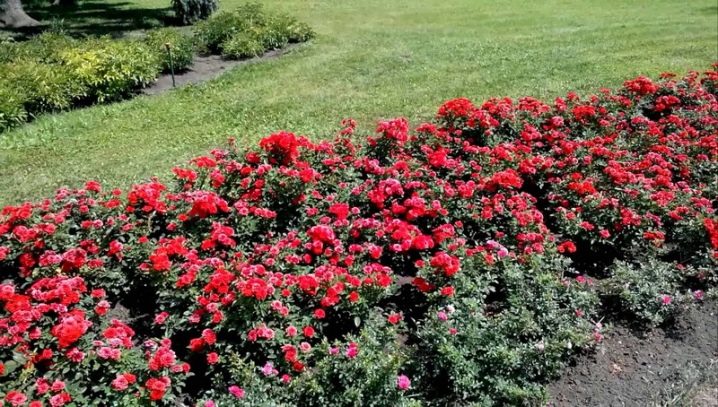
What it is?
Border roses are low and medium-sized shrubs that are characterized by abundant and repeated flowering. The height of such crops does not exceed 60 cm. Since the flowers look like a picturesque frame, they are called "curb"... The petals of this type of roses have a double base. The buds are striking in a variety of colors. In some varieties, one flower can combine several shades that change throughout the season. For example, the rose "Masquerade" has bright yellow petals by autumn acquire a crimson color.
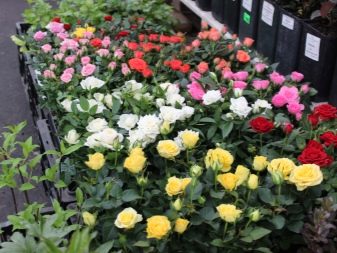
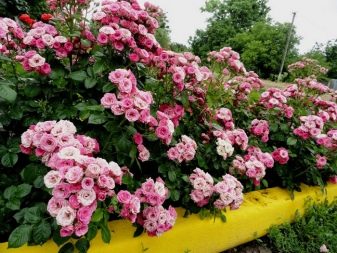


Border roses are classified as unpretentious crops in cultivation. They take root well after transplantation and can withstand low temperatures. Such flowers are widely used by designers and architects in the design of suburban areas, recreation areas and streets. Their main feature is considered to be that they are ideally combined with other flowering crops. These roses can grow both in small pots in the apartment and in the garden. Due to their compactness, they are perfect for planting both large and small personal plots.
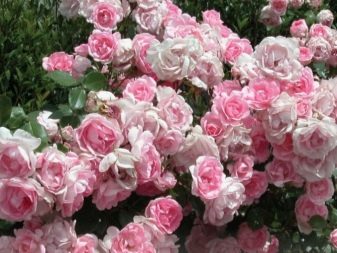
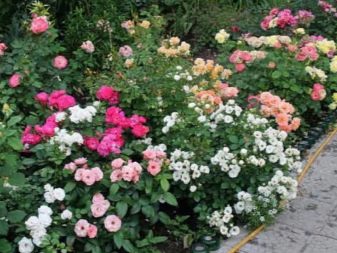

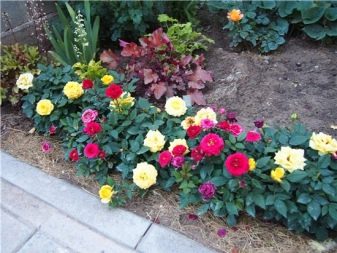
Border roses are different, so before buying it is necessary to study the description of a particular variety in order to take into account the recommendations regarding planting and care. In this case, you will receive a beautiful living decoration that will delight you for a long time.
Varieties
Today the flower market is represented by a huge assortment of small border roses. Moreover, each variety is characterized by its own characteristics, growing conditions and colors. Summer residents prefer to choose the best varieties for planting, which have received many positive reviews, they include several options.
- "Cordula". Thanks to a light aroma and beautiful spherical buds of an orange-red hue, such roses do not leave anyone indifferent. Plants bloom throughout the summer. Their large and bright brushes look original against the background of dark green leaves with a bronze tint. Most often, red roses are found, but their shade can change to peach. The bushes are characterized by low growth and branching. The variety is easy to care for and propagates easily by cuttings.
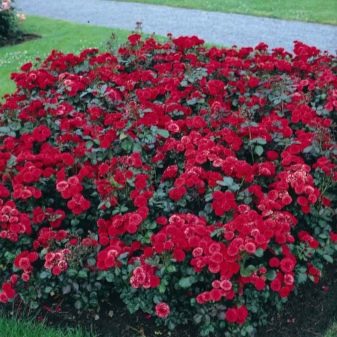
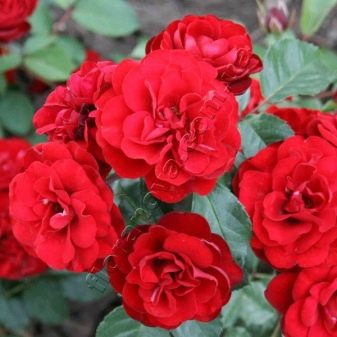
- Little White. This is a Canadian rose with a delicate white color. Terry flowers have an average size not exceeding 5 cm in diameter. They gather in small inflorescences of five and give a mild aroma. Rose bushes are undersized, reaching a height of 80 cm. When growing crops, regular pruning of shoots and installation of wind protection are required. In garden plots, snow-white flowers are in good harmony with other perennial flowers.
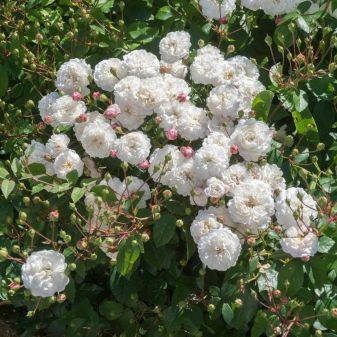
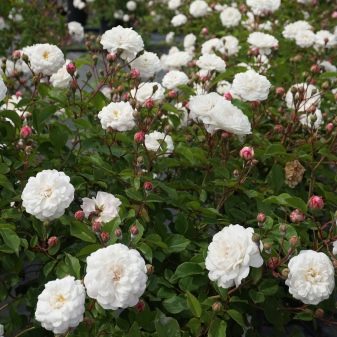
- Clementine. This variety is represented by upright branchy bushes. The height of the plants is 50 cm. The orange color of the inflorescences gives them a beautiful look and romance.A curb rose can also change its shade to a delicate apricot, it depends on the level of lighting in the area. The main advantage of the variety is that it has a long flowering period, so new inflorescences constantly appear on the bushes.
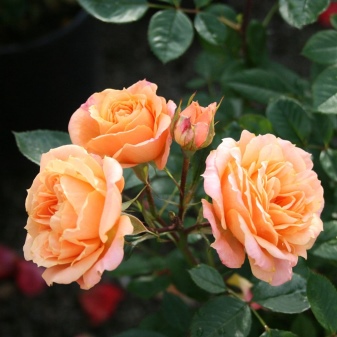
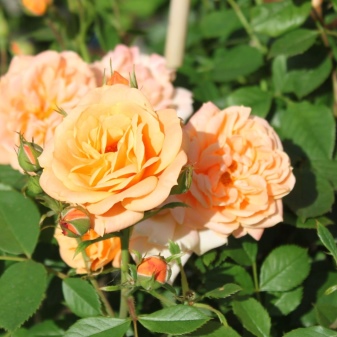
- Lidia. This is one of the varieties of spray roses. The homeland of the flower is Holland. The height of the bushes is small, rarely exceeding 70 cm. The bushes can grow up to 60 cm wide. The buds of plants have a pale pink hue, they can shimmer in the sun from bright crimson to light pink. These are winter-hardy crops that are rarely exposed to diseases.
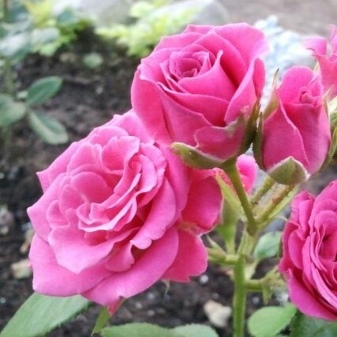

- Yellow doll. This is the most popular and demanded variety of mini roses, which is characterized by a neat appearance and diminutiveness. The bush is sprawling, it grows up to 25 cm in length. The flowering period of the culture is long, so it pleases with the abundant formation of bright buds for several months. Flowers of a yellow shade are small (6-7 cm in diameter), they gather in small inflorescences of 4 pieces and create a sweetish aroma with fruity notes. The variety can be grown both in pots and in the garden, decorating the borders.

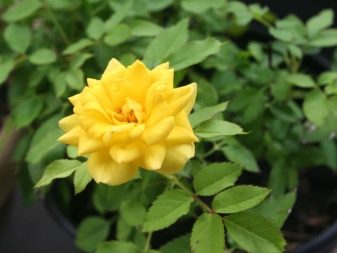
- Sugar Baby. The miniature rose has an unusual lemon shade, smoothly turning into bright red or light pink. The height of the plantings reaches 40 cm. They do not grow too much, which saves space on the site. Flowers tolerate wintering well and bloom constantly in summer. Up to 15 small flowers can be collected in one inflorescence. This variety is recommended to be planted together with other curb plants.
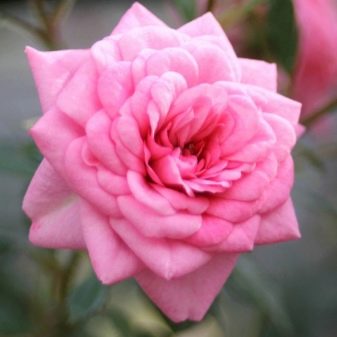

Landing
Growing curb roses is a simple process. However, in order to get a good result, summer residents need to know some of the features of planting and care. Usually, these mini-flowers are planted in the garden, having previously selected an area protected by a shelter from the wind and illuminated by the sun. Strong gusts of wind pick up moisture from the soil, which can negatively affect the development of the plant. Lack of light will also affect the culture in a bad way. Roses growing in home pots should also receive adequate nutrition.
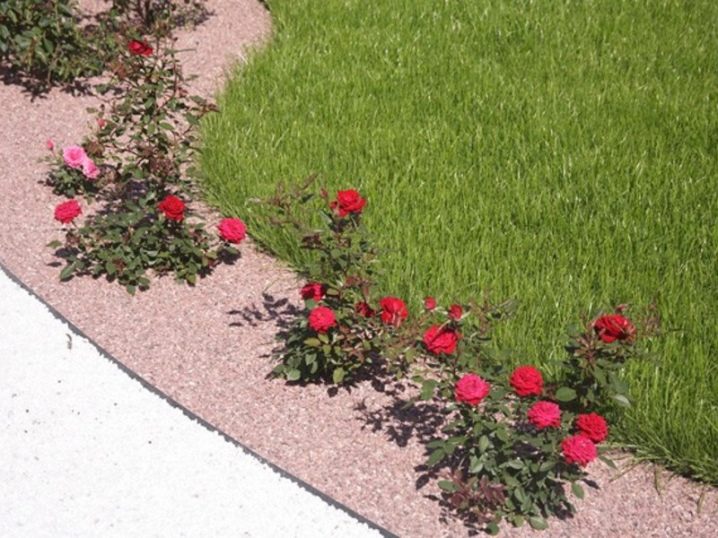
It is not recommended to form rose plantations in areas where cultures of the Rosaceae family previously grew, since the land "gets tired" and is depleted. In addition, fungal diseases and pests may remain after previous plantings. Curb roses are not whimsical to the composition of the soil, they feel great on any soil. The only exceptions are dense, dry and swampy areas. Before planting seedlings, the soil must be improved by mixing it with organic compounds and drainage.
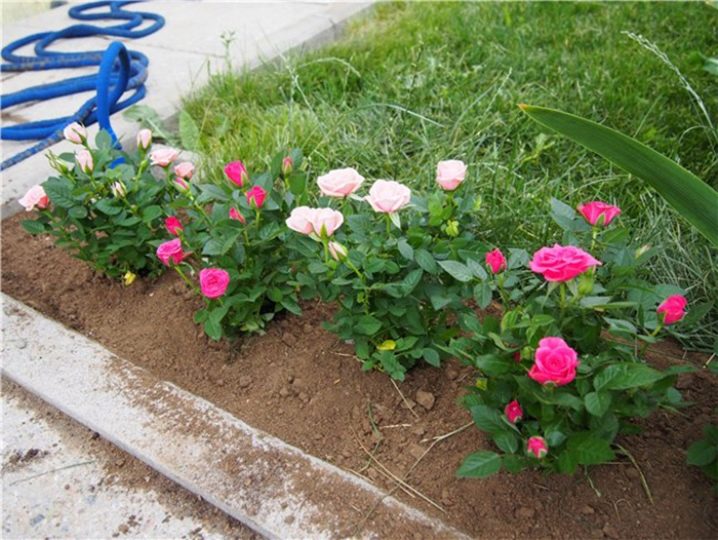
Planting and replanting should be carried out in early spring, after the ground has completely warmed up. This will provide the bushes with rapid development and strengthening of the rhizome for winter. After transplanting seedlings to a new place, for the first time they need to be protected from night frosts, covered. The size of the planting hole should not be larger than the diameter of the roots, which are gently straightened and deepened into the ground by 3-5 cm. A distance of about 30 cm should remain between the plantings. The planted plants are watered abundantly.
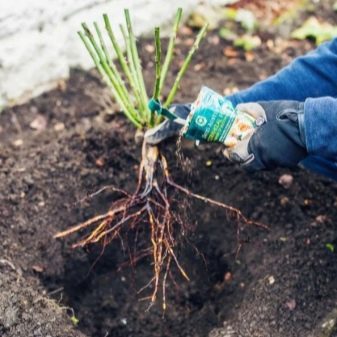

Growing
Caring for curb roses is not particularly difficult, so even novice summer residents can cope with it. In order for the rose to thank the gardener with lush flowering and healthy growth, it should be watered periodically, cut off the shoots and feed the roots with minerals. The areas where the flowers grow should not be too moist or dry. Watering should be done in the evening, using pre-settled and heated water. You can not use irrigation of the aboveground part of the flowers, you can water only at the root.

Caring for decorative flowers also provides for timely feeding, which should be carried out 2-3 times per season.As fertilizers, it is allowed to use mixtures intended specifically for decorative flowers, "Kornevin". Additionally, you can use organic matter in the form of horse manure, but you need to be extremely careful with it in order to prevent burns of the rhizomes.
The cultivation of such roses is not complete without pruning. At the same time, these crops must be able to properly crop. The procedure is the cleaning of the bushes from dry and diseased shoots, during which a beautiful and neat ground part is formed. The cut off area of the shoot can be affected by viral diseases and rot. To prevent this, you should always use only clean garden tools. Pruning must be done throughout the summer.
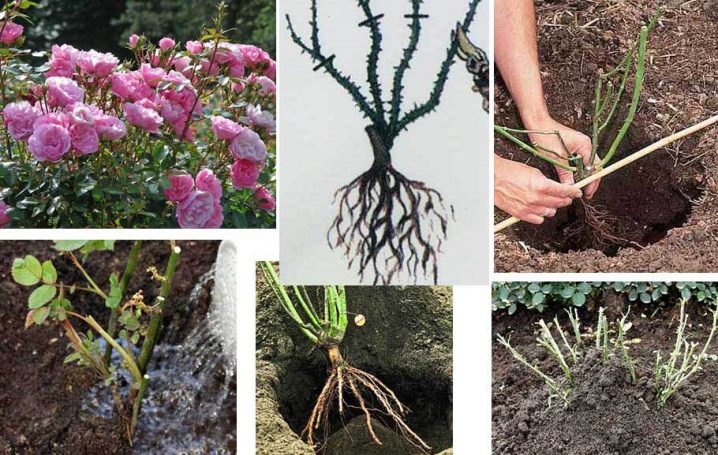
If you take care of the plants correctly, they will turn into gorgeous bushes by the fall. They can be propagated both by cuttings and seedlings.
How to shelter them for the winter?
Many varieties of border roses are frost-resistant and winter well, but despite this, they need to be insulated in the fall. Preparation begins with the removal of dry foliage and shoots, after which a protective shelter is prepared. This is usually done with the appearance of the first night frosts. The plant is spud up no more than 20 cm high. Then pine or spruce branches are laid out around the circumference. They are pressed tightly to the ground and additionally covered with spruce branches or dry foliage. You can also make a protective frame from roofing material and film.
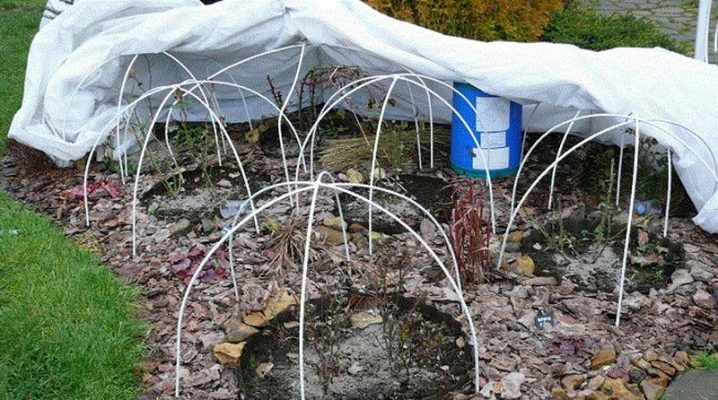
Possible diseases
Like any other flowers, border roses are sometimes subject to disease and pest attacks. To prevent the appearance of insects, it is recommended to plant flowers next to onions, sage and marigolds. Thanks to this, spider mites, aphids, sawflies and caterpillars will never appear on them. In addition, it is necessary to periodically carry out preventive treatment of the bushes with infusions of garlic, onions and calendula. In case of mass appearance of pests, chemical agents such as "Aktara", "Sunmight", "BI-58" should be used.

As for diseases, miniature roses are most often susceptible to black spot, powdery mildew, alteriosis and rust. To protect the culture from the above diseases will help its treatment with a solution of copper sulfate, nitrophenol and DNOC, which is carried out both before the bushes are sheltered for the winter, and after they are opened. Moderate watering will also help to avoid many fungal diseases.
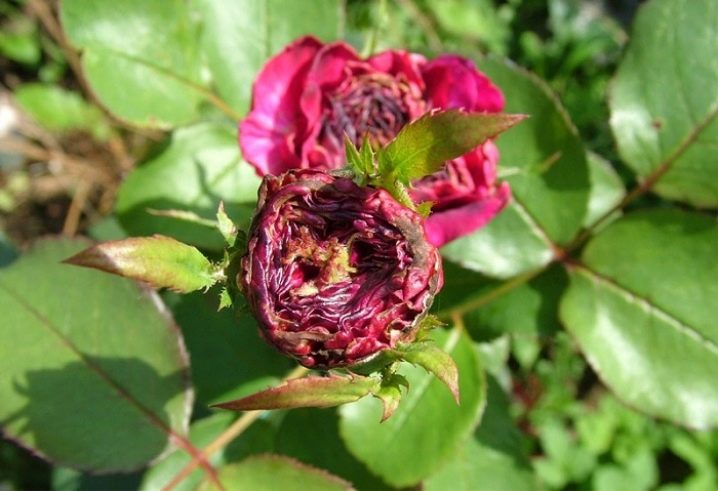
If the culture is still sick, then experts recommend processing with Bordeaux mixture, foundation and copper oxychloride. The affected areas of the plant are cut and burned.
Examples in landscape design
Border mini-roses fit perfectly into the landscape design of any personal plot. Due to their compactness, bright colors and sophistication, they are perfectly combined with various garden plants. These colors can be used to decorate borders of various shapes and designs. Compositions of rose bushes planted near stairs, paths, recreation areas and "dry streams" look beautiful. To get an interesting effect, roses should be combined with other vibrant flowers and herbaceous perennials. Combinations of roses with dwarf barberries, Japanese spirea and lingonberry bushes will help to emphasize the beauty of flowers.

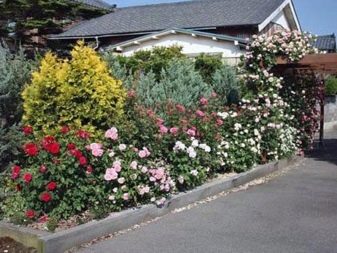
When decorating a site, it is important to consider that red roses should not be placed next to orange, purple and pink flowers. If a flower border is installed along a garden path, it can be filled with combinations of white with blue, red with lilac, yellow with purple. It is best to use flowers of the same variety for design. Such compositions can be made horizontal, or they can be placed in flower beds lined with natural stone. In the spring, planting snowdrops, hulls and muscari will help dilute the juicy colors.
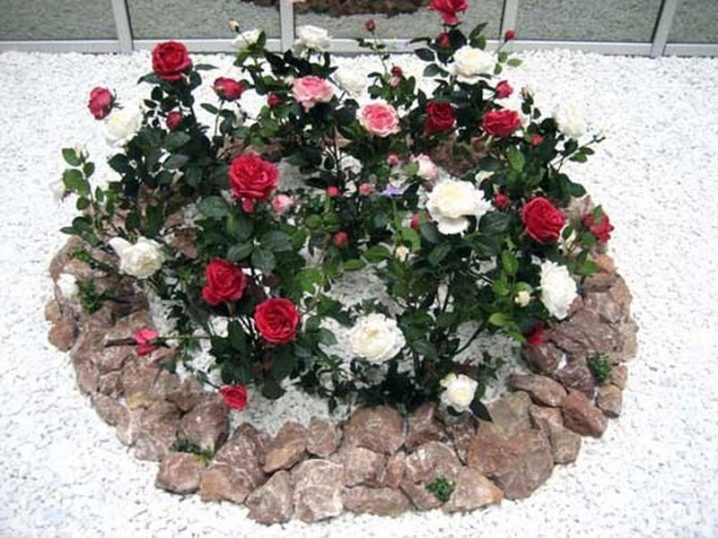
If a lot of shrubs are planted on the personal plot, they can be supplemented with flower beds of roses. They will look win-win against the background of spruce, thuja, cotoneaster and magnolia. To avoid clumsy design, bushes and plants should be placed at a distance of 1 meter. The courtyard fences look great, near which are planted rose bushes and lilacs, chubushnik, yellow acacia. This combination of the palette gives the site an unusual look.

For spacious summer cottages equipped with a recreation area, one- and two-sided curbs will be an excellent solution. At the same time, roses can be combined with other varieties, correctly selecting the height of the stems, the size of the buds and the shade. The most popular are the curb paths 80 cm high. They are arranged in two rows, using white, yellow, pink and purple roses.
For information on how to plant border roses, see the next video.

































































































The comment was sent successfully.